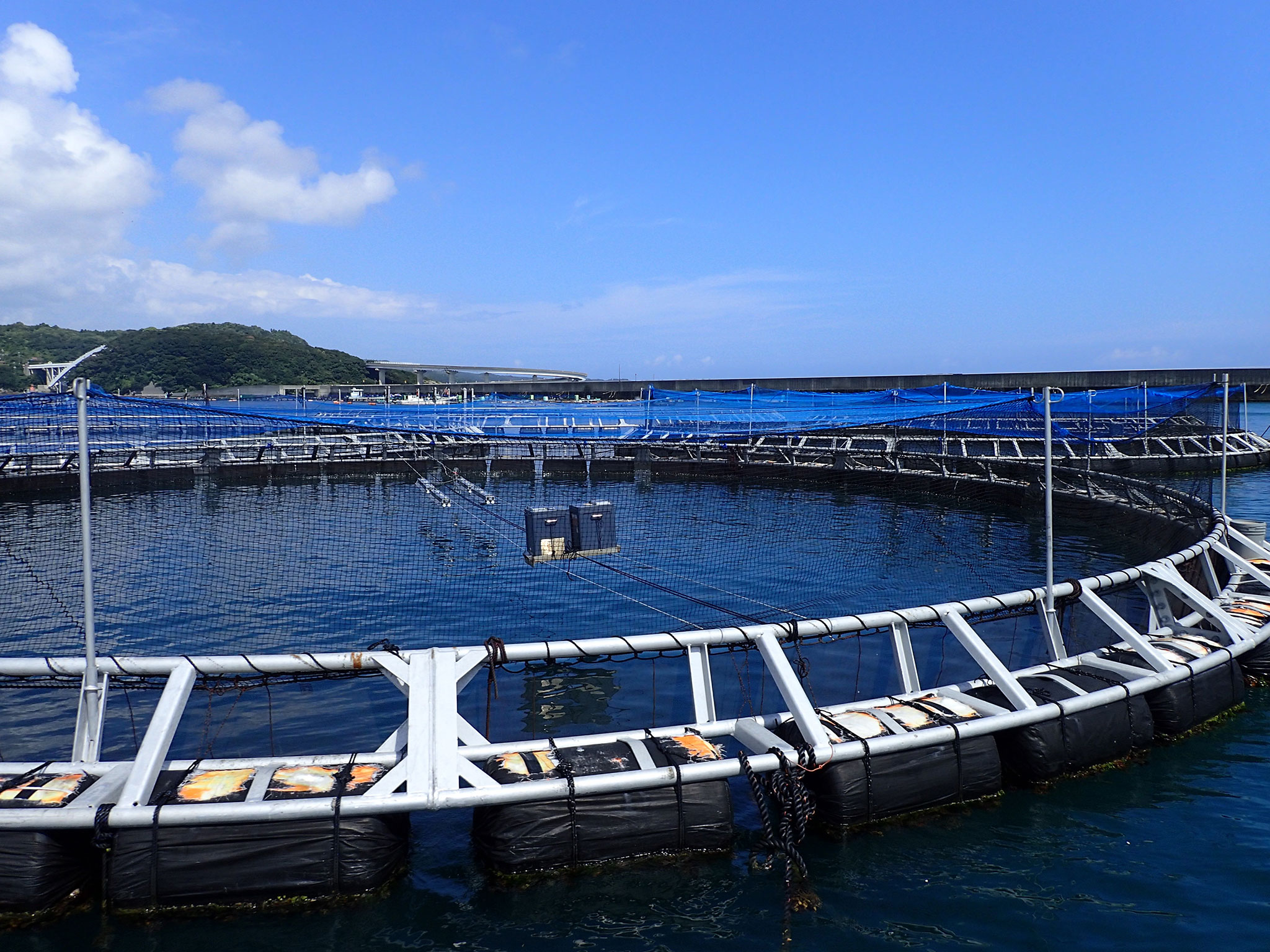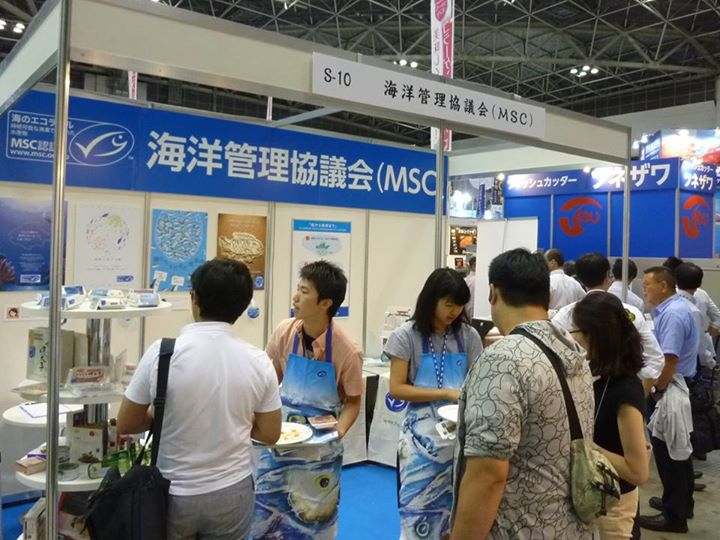Are there any ongoing marine conservation efforts in Japan? As most of us know, Japanese fishing boats still hunt whales under the guise of scientific research. Dolphins continue to be slaughtered in Taiji and sushi lovers across the country still consume endangered bluefin tuna. But some Japanese universities and organizations are dedicated to preserving the health of the oceans and promoting sustainable seafood without killing certain marine animals. Below are four such examples.
Bluefin Tuna Farming at Kinki University
Conservationists have long warned that bluefin tuna stocks are depleted, but as the fish continues to be considered a sushi delicacy, it’s unlikely that consumers will stop eating it. Aquaculture may relieve some pressure on these already decimated wild stocks. In 1970, the Japanese government started a project to cultivate bluefin tuna, inviting numerous universities to offer possible solutions but, as no achievements were made, the universities ended their research efforts, except for Kinki University.
Today, Kinki University has become the first in the world to successfully cultivate completely farm-raised bluefin tuna, hoping to produce a stable supply to address declining tuna stocks. The university’s method is called full-cycle aquaculture, which involves raising artificially hatched larvae to adults, collecting their eggs and hatching them to create subsequent egg-laying generations. Brood stock are raised for at least three years. Their fertilized eggs are then collected from the water’s surface and hatch into larvae in about 32 hours, before being reared in tanks on land until they reach around 2 to 3 inches (6 to 7 cm) long and grow into fry in about 40 days. They are then transferred to ocean net cages, where it takes them about two years to grow to over 3 feet (1 m) long and weigh 44 pounds (20 kg), at which point they are shipped to market.
Kinki University’s techniques are being recognized worldwide, and in addition to expanding sales and cultivation opportunities, the university operates restaurants in Tokyo and Osaka, serving the fish it raises, and using the profits for further research. Work is also underway, with cooperation from the Inter-American Tropical Tuna Commission, to develop Panama’s yellowfin tuna aquaculture by sharing technology and conducting rearing experiments. The university also aims to address declining tuna stocks by collecting biological information and researching breeding methods. While this method may address one problem, it’s created others, mainly in sourcing the large quantity of fish needed to feed farmed tuna, as well as preventing death among larvae.
The Marine Stewardship Council in Tokyo
Some organizations in Japan are working on sustainable fisheries, by cooperating with companies to promote sustainably caught seafood to consumers. The presence of the Marine Stewardship Council’s (MSC) Tokyo office is one sign that market-based efforts to make fisheries more environmentally friendly are spreading here.
The MSC has been making inroads in Japan since its establishment here in 2007. Its aim is to boost adherence to the MSC program by domestic and regional fisheries, Japanese seafood retailers and the public. One in six consumers are said to recognize the label, and a range of fisheries for species such as skipjack tuna, flounder and snow crab have been certified. Among them are the Kyoto Danish Seine Fishery, and a scallop fishery overseen by the Hokkaido Federation of Fisheries Cooperative Association.
Japan’s largest supermarket chain, Aeon, began promoting MSC-certified seafood in 2006, aiming to proactively introduce sustainably harvested fish as a way to protect marine resources and secure a steady, long-term supply. Aeon now promotes eco-friendly fishing practices and products in its seafood sections. In 2014, MSC Japan, together with WWF Japan, started a campaign called Sustainable Seafood Week to promote such seafood and highlight its importance by working with retailers, hotels, suppliers and producers. MSC Japan also has a stand at the Japan International Seafood Show, an annual event that brings together professionals and experts in the seafood industry.
WWF Japan and Coral Conservation Efforts in Okinawa
Shiraho village on Okinawa’s Ishigaki Island looks out over a 7.5-mile (12 km) stretch of coral reef. Its waters are home to the third-largest reef system in the world in terms of coral, with the world’s oldest blue coral and over 300 species of fish. In the mid 1980s, the WWF established a center there called the Shiraho Coral Reef Conservation and Research Center, or Shiraho Sangomura (Shiraho Coral Village). At the time, a land-reclamation project related to the construction of a new airport was underway, and while the airport opened in 2013, the human and environmental costs have been considerable. Among the many concerns were the separation of land and sea ecosystems, the loss of coastline greenery and contaminated groundwater.
Today, Shiraho Coral Village champions a model of ecotourism and has established tourism guidelines, as well as a separate community-based preservation organization involved in the restoration of traditional fishing tools to prevent coral damage. Among the center’s activities are efforts to restore a fishing technique in which rocks are piled up in walls on the shore or shallow areas of the reef to use the tides to catch fish. The rocks’ crevices are an ideal habitat for many organisms, so the technique is being studied for possible revival. Meanwhile, vast tracts of wild vegetation are used for agriculture here, with heavy rain leading to a run-off of red soil, so the center launched another program to plant shell flower, or getto, which is a species of ginger (Alpinia speciosa), to stop red-soil contamination. The center connects local residents, businesses and researchers and promotes integrated local community development activities aiming to pass on traditional culture and coral-reef conservation. Such efforts hold great promise, but Shiraho will still need time, effort and expertise to ensure that its coral reefs aren’t lost forever.
MEL Japan (Marine Eco-label Japan)
Further efforts to conserve the marine ecosystem and avoid excessive catches in Japan are ever-more important as the world’s population and demand for seafood continues to grow. In light of this, and realizing that Japan is one of the world’s largest markets for seafood, stakeholders in the Japanese fishing industry and fisheries management created their own eco-labeling scheme for the Japanese market. Marine Eco-label Japan, or MEL Japan, is a joint effort by the fishing industry, scientific community, conservation organizations, fish processors and distributors, consumers and food specialists committed to promoting the sustainability of Japanese fisheries. The Japan Fisheries Association also provides services such as logistics and communications within and outside the scheme to facilitate administration. Established in Tokyo in 2007, the goal of MEL Japan is to heighten recognition in the Japanese market and respond to foreign markets when it comes to promoting the export of sustainable Japanese seafood. MEL Japan also aims to create a cycle in which, through eco-label certification, fishermen pay close attention to resource management, reinforce cooperation with scientists and administrators, and make use of their fishing activities to contribute to the accumulation of scientific data and the improvement of information. As of August 2015, the scheme had certified 23 fisheries.
MEL Japan was established after those in the fishing industry concluded that Japan needed a Japanese-run scheme, maximizing the expertise of Japanese stakeholders. MEL Japan encourages voluntary, fishermen-led resource allotment called “co-management,” where fishermen share the role of fisheries management and resource enhancement, and are encouraged to fulfil their role in resource management voluntarily and individually. Although critics have pointed out that little has been done by the system to stop fish stocks from declining, nevertheless, MEL Japan is a sign that some fishermen believe eco-labels may help them sell fish as customers become increasingly concerned about sustainability.
By guest author Bonnie Waycott



